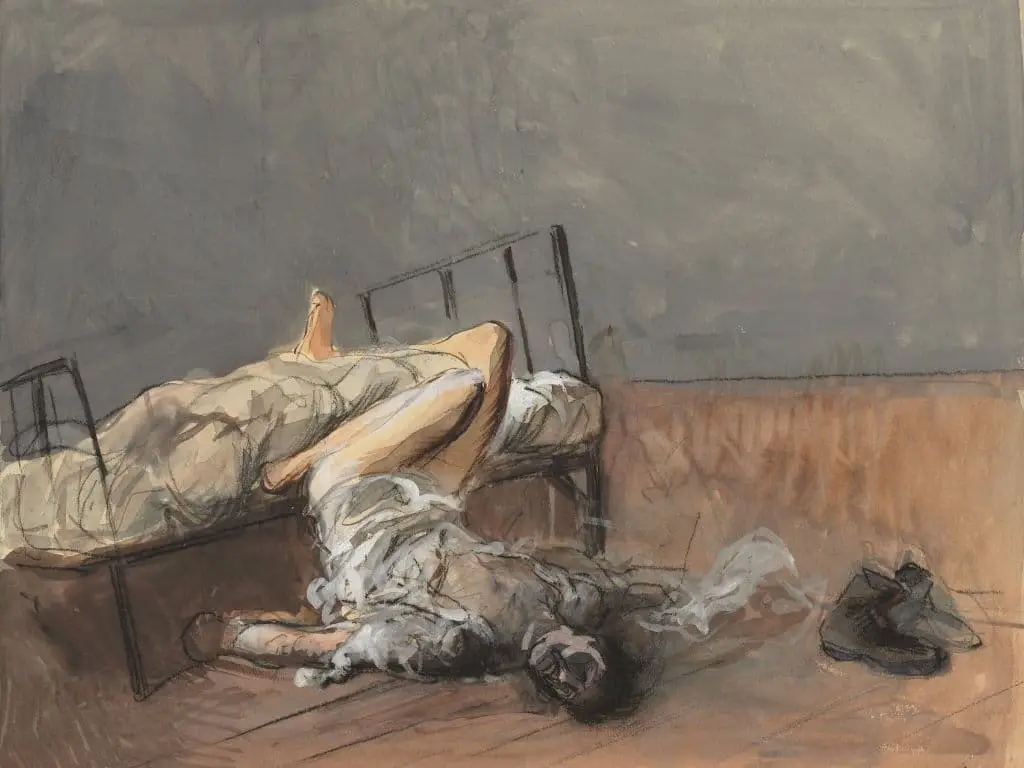Today, Vincent Van Gogh is regarded as one of the greatest artists to have ever lived. His pioneering brushwork helped impressionism evolve into the post-impressionist ear. Despite his artistic advancements, however, Van Gogh’s life was sad and ended in tragedy with him taking his own life.
So, why did Van Gogh kill himself?
The main cause of Vincent Van Gogh’s suicide was his own deteriorating mental health. The year prior to him taking his own life, he spent an entire year at an asylum. His letters and journals during the last few years of his life were also fraught with depression, anxiety, and suicidal thoughts.

Unfortunately, this seems to be a similar trend with great artists. The more influential the work, the greater the chance for mental illness. In today’s post, I’m going to do my best to break down some of the key reasons why Vincent killed himself.
Why Did Van Gogh Kill Himself?
Van Gogh’s life is one that represents the quintessential life of a “tortured artist.” As history has shown us, the most beautiful minds are often the most fragile, and Vincent had a history of suicidal thoughts, letters, and speeches that he often gave to those around him.
In fact, towards the beginning of his art career in France, he expressed to his own brother that he believed his body would only last another 7 or 8 years before he died. Those aren’t exactly the words of somebody who plans on living a long, healthy, and successful life…
So, that being said, what are some of the underlying reasons that contributed to his eventual death and downfall? Let’s take a look.
Lost Love Interests
In his early career as an art dealer, Van Gogh worked for a company called Goupil which had offices in both Paris and London. During his time dealing art, he spent most of his time between France and England.
In 1877, Van Gogh fell in love with a girl in London… Unfortunately for him, she rejected his love and offers of courtship. This would go on to devastate him emotionally. In fact, it’s what triggered him to quit his job dealing art in the big city and return to the countryside to study theology and return to the ministry.
Poverty
His brief stint in the ministry is also what impoverished him. After having a spiritual awakening in 1879, he gave away all of his money and possessions to the impoverished in a small coal-mining town named Borinage. Unfortunately, poverty seems to have followed many other modern artists similar to Van Gogh.
Depression and Anxiety
In essence, Van Gogh’s broken heart and ensuing poverty were part of what triggered him to become the artist that he was. However, the method by which he became an artist was through self-isolation. During his isolation, his depression and hopelessness began to take seed.
He felt that giving away his riches was his step towards enlightenment. However, the church he was involved with turned him away, treated him like a crazy person, and told him that he was causing a scandal. All the while, he truly believed he was doing something right for the people.
Rejected Art
Van Gogh got back into art in 1880 after his rejection by the church. He figured, if nothing else, he could give back to people by sharing beautiful art. He studied under Dutch landscape painters such as Anton Mauve before moving back to Paris, France, and studying the arts of modern impressionists like Rembrandt.
Despite beautiful art and complete dedication to his craft, though, he only sold a few paintings during his lifetime. Overall, his artistic career was one of a starving artist. He was unrecognized and unrespected. His goal of sharing his art with the world wouldn’t happen until well after his death.
How Did Van Gogh Kill Himself?
In 1887, Van Gogh moved out to the French countryside to find peace and solace. Instead, he only found more personal drama. His health deteriorated and he fell into severe depression. In a famous hallucination, he cut off half of his own ear with a shaving razor.
Shortly thereafter, he admitted himself to an asylum for recovery, which never truly happened.
After returning to his father’s land in 1889, he tried to shoot himself in the chest. Although he failed in the initial attempt, the ensuing coma, strain, and loss of his desire to live caused him to die.
Conclusion
There are some mysteries and rumors that surround Van Gogh’s death. For example, some historians believe that he was shot by somebody else. However, based on his own written records and loss of his desire to live, the general consensus is that he tried to take his own life and then died shortly thereafter due to his injuries.